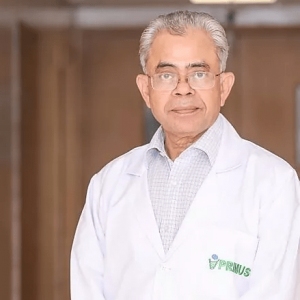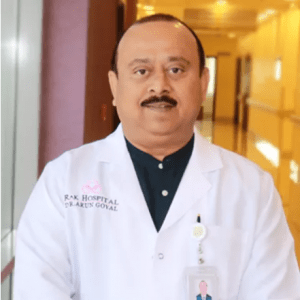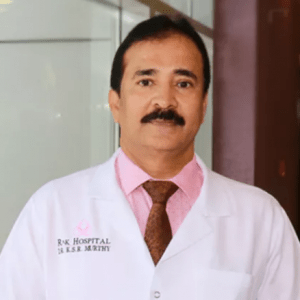Down Syndrome
Down syndrome is a condition of the chromosome where a child is given birth with another copy of the 21st chromosome due to an error division of the cell, which causes a delay in mental and physical development and disabilities. Read More
Top Doctors For Down Syndrome Treatments
Top Hospitals For Down Syndrome Treatments
Down Syndrome
Table of contents
What is Down Syndrome?
Down syndrome is a condition of the chromosome where a child is given birth with another copy of the 21st chromosome due to an error division of the cell, which causes a delay in mental and physical development and disabilities. It can be said to be a disorder of the genes that happens when a cell division occurs abnormally, resulting in another partial or full copy of chromosome 21. The additional genetic material causes Down syndrome’s physical features and developmental changes.
In the body, the chromosomes are little packages of genes. Normally, 46 chromosomes are what a baby is born with, but with babies with Down syndrome, there is an additional copy of chromosome 21, one of the 46 chromosomes. Every chromosome has two copies normally, but in individuals with down syndrome, Chromosome 21 is three copies, either complete or partial. As a baby develops during pregnancy and birth, the chromosome ascertains how the baby’s body is formed and functions. ‘Trisomy is a medical name for the additional copy hence another name for Down syndrome is Trisomy 21. The person’s intellect, overall development, and physical features are affected by the extra chromosome, and that is why there are similarities among those with Down syndrome.
In children, Down syndrome is the major genetic chromosomal disorder and cause of disability in learning. Down syndrome causes lifelong delays in development and intellectual disabilities and also causes lifespan to be shortened. Its severity varies among persons. In addition, it majorly causes other medical abnormalities like gastrointestinal and heart disorders. An increase in the quality of life of those with Down syndrome can be achieved if there is a better understanding of this disease and interventions are initiated early. This will help them to live fulfilling lives.
Types of Down Syndrome
These include:
- Mosaic Down syndrome: Children with mosaic Down syndrome are born with some of their chromosomes having an extra pair. It is common in about 2% of those with Down syndrome, those with this type of Down syndrome tend to have symptoms fewer than those with Trisomy 21 type.
- Trisomy 21: This happens in about 95% of the cases. It is the major occurring type of Down syndrome. Nondisjunction is an error in cell division that is responsible for trisomy 21. In this type of Down syndrome, for every cell, instead of 46 chromosomes, there are 47 chromosomes. That is, every cell has an extra chromosome 21.
- Translocation Down syndrome: In this type, during cell division, part of chromosome 21, after breaking off, will attach itself to another chromosome, usually chromosome 14. This type is seen in about 3% of Down syndrome cases. There are no special physical features seen in individuals with this type of this case. However, there is a chance that they would have a child with an additional chromosome 21.
Some Down syndrome features are seen in the individual with translocation due to the presence of the extra part of chromosome 21.
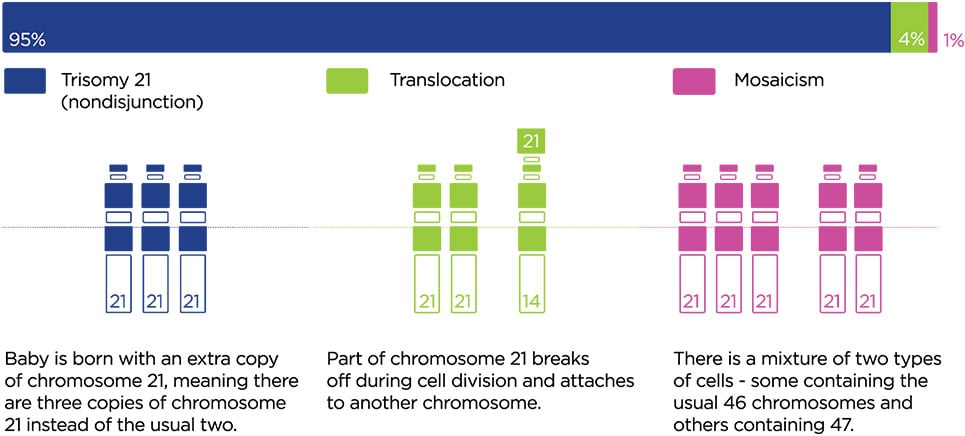
Causes
Genes (specific codes or instruction sets to cause cell creation) that are carried in chromosomes in the cell’s nucleus are passed to children from both parents during reproduction. Each gene of a baby is supposed to have 46 chromosomes, that is, 23 pairs of chromosomes, each inherited from both father and mother. However, for children with Down syndrome, the baby will have 3 copies or an additional partial copy of chromosome 21 instead of the usual two. Some or all of the baby’s cells will either have an extra full or partial copy of chromosome 21.
One in seven hundred babies is born with Down syndrome in the United States, according to the National Down Syndrome Society (NDSS). This genetic disorder is most common in the United States.
There are a lot of factors that contribute to Down syndrome, but among older women who are pregnant, the prevalence is higher. The likelihood of a 25year old pregnant woman having a child with Down syndrome is 1 in 1,250, but this likelihood increases to 1 in 100 at age 40.
The risk factors associated with Down Syndrome
These include:
- Carriers of the genetic translocation for Down syndrome can pass these genes to their children.
- As a woman gets older, the chances of giving birth to a child with Down syndrome increase. This is because the risk of older eggs having an improper division of chromosomes is high. After age 35 years, a woman’s chances of having a child with down syndrome increases.
- The risk of having a child with Down syndrome increases with a parent who has already had a child with Down syndrome and parents who are translocation themselves.
Features of a person with Down syndrome

People with Down syndrome may look or act the same; however, each individual has different abilities. The intelligence Quotient, which is a measure of intelligence, of those people with Down syndrome is in the range of mildly –to –moderately low, and they speak slower than other children. An infant who has Down syndrome will have a slower development than a child who doesn’t have the condition, even though the child may have an average size when born.
- Ears that are small and shaped atypically
- A neck that is short
- A face that is flattened, especially the bridge of the nose
- A tongue that protrudes
- Feet and hands that are small
- Palmar crease that is a single line across the palm
- There are tiny spots that are white on the iris of the eye called Brushfield’s spots
- Loose joints or muscle tone that is poor
- Pinky fingers which are small and sometimes then to curve towards the thumb
- Their height is shorter as children and adults
- Upward slanting of the eyes
- On the inner corner of the eyelids, there are skin folds
- Flexibility that is excessive
The cognitive development profiles of those with Down syndrome suggest that their intellectual disability is mild to moderate, although there is variability in their intellectual and cognitive ability. The difficulty in learning experienced by those who have Down syndrome does lead to delays in development.
Speaking development and language grasping may take longer time than expected. Even coordination and fine motor skills are delayed. Milestones in development take time to reach for children who have Down syndrome as they may be slow to stand, turn over and sit. Eventually, those who have Down syndrome will meet these milestones.
a child may have the following symptoms due to delay in development both mentally and socially
- impulsive behavior
- likelihood of making poor judgment
- learning capabilities are slow
- attention span is short
People with Down syndrome disease can go to school and become members who are active in the community if they are regularly engaged and receiving regular therapy.
Treatment
Down syndrome has no cure; it is a lifelong condition. However, there are lots of educational and support programs that can help the individual and the family. Services started early in a baby’s life can assist in improving both intellectual and physical abilities. The focus of these services is to help children who have Down syndrome to reach their full potential. The available programs start with interventions in infancy. Special education teachers and therapists will assist the child in learning social, motor, sensory, self-help, and language and cognitive abilities. Though children with Down syndrome will learn more slowly than other children, they eventually often meet up with age-related milestones.
Irrespective of the intellectual ability of a child with Down syndrome, school is a vital part of the child’s life. Apart from allowing socialization that is valuable, schooling also aids students with Down syndrome in building life skills that are important.
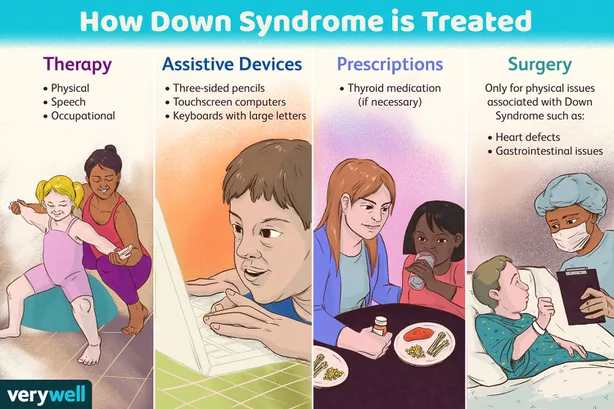
Health Complications associated with Down Syndrome
There are some medical complications that are associated with Down syndrome
- Cataracts
- Loss of hearing
- Congenital heart defects
- Leukemia
- Sleep apnea
- Problems of the hip like dislocation
- Dementia
- Obesity
- Later in life, Alzheimer’s disease will develop
- Constipation that is chronic
The functions of the body can be affected by a general health problem. A congenital heart defect is found in those 40 to 60% of those with Down syndrome.
Children who have Down syndrome are prone to infections like
- Tonsillitis
- Middle ear infections
- Respiratory infections
- Pneumonia
Life Expectancy and Inheritance
The life expectancy of people with Down syndrome in recent times is, on average, 50 to 60 years, unlike what it was before, showing an improvement in lifespan in recent times. Babies born with Down syndrome in 1960 don’t live to see their 10th birthday. Individuals with Down syndrome have a unique set of challenges; however, these challenges can be overcome. There is a need to have a close relationship with a medical professional with expertise in the challenges these individuals present with
Down syndrome, most times, is not inherited; it happens when during the early development of the fetus, there is a mistake in the division of the cell. Translocation Down syndrome can be inherited from parents by a child. The percentage of children who have translocation Down syndrome is about 3 to 4 percent, and some of them got it from one of their parents.
References
- https://www.cdc.gov/ncbddd/birthdefects/downsyndrome.html#:~:text=A%20medical%20term%20for%20having,physical%20challenges%20for%20the%20baby.
- https://www.medicalnewstoday.com/articles/145554
- https://www.mayoclinic.org/diseases-conditions/down-syndrome/symptoms-causes/syc-20355977




